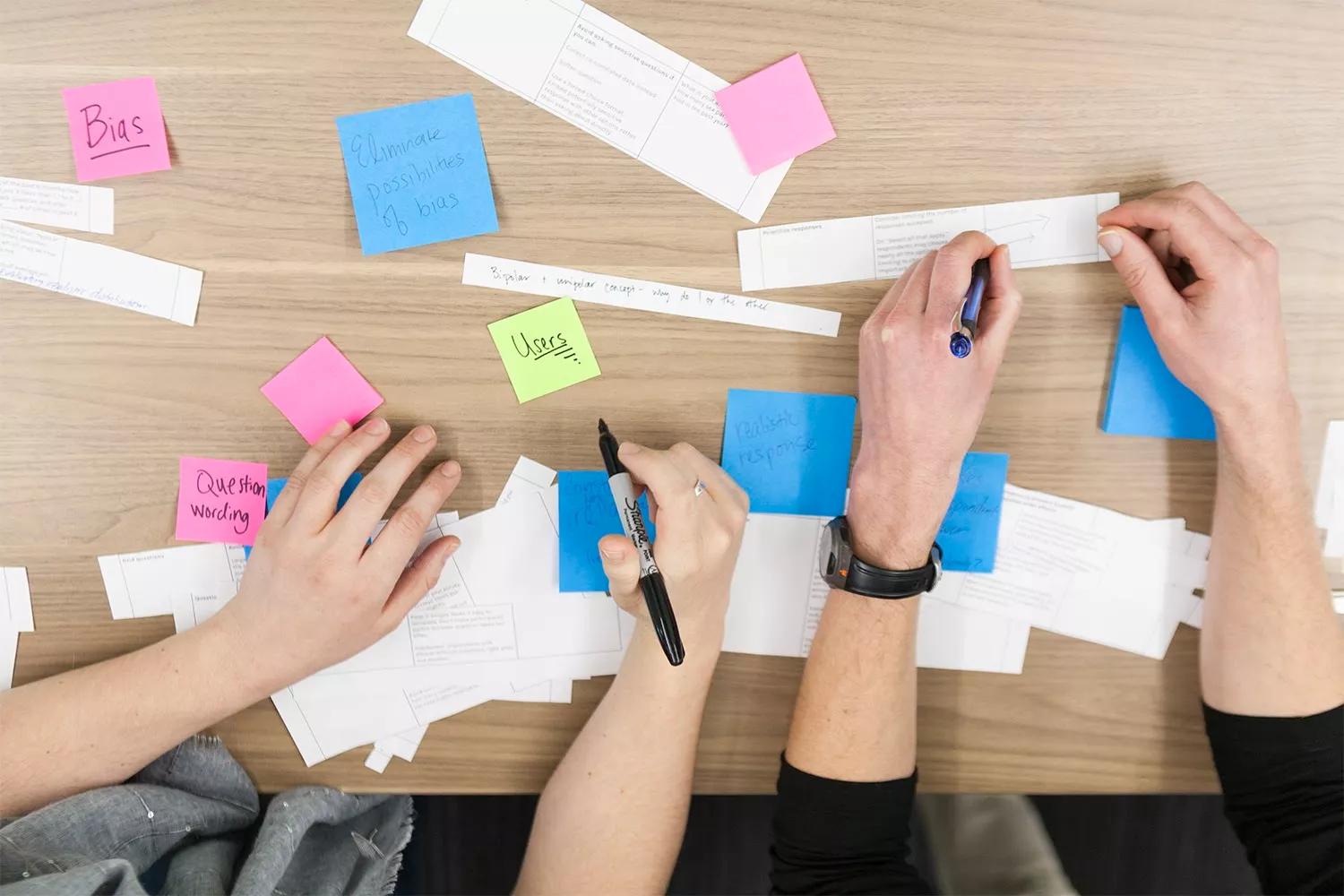Applying user experience (UX) design to clinical research: Behind the Scenes Q&A

"Start with the user" is a guiding principle in technology, and the foundation of effective product design. In clinical research, however, studies weren't historically designed around participants — significantly impacting scientific progress.
From enrollment to study participation, navigating traditional clinical research is complex, contributing to high attrition rates when participants struggle to realize value from their experience. Today, as many as 86% of studies fail to recruit enough participants, and 30% of participants drop out after joining. Making it easier for people to participate in research, so important treatments can get to patients faster, was the impetus for Project Baseline.
But what does providing a "great user experience" actually mean in clinical research , and how does this philosophy deliver tangible benefits to people? Realizing the vision of more patient and participant-centric experiences can start with user-centered design. If we applied the UX lens of consumer technology to clinical research, could we make participation more seamless, engaging, and valuable for people?
To help people discover and participate in clinical research, researchers and designers on the Project Baseline UX team focus on understanding participants' needs and goals. We sat down with Christine Wu, a UX designer, and Kaylyn Frazier, UX researcher, to learn more about improving participants' journey with Project Baseline by walking a mile in their shoes.
How would you define a "great user experience?" What are the building blocks?
Kaylyn, UX researcher: Fundamentally, a great experience is both useful and usable. You could create something that's really easy to use, but doesn't actually add value or solve a real problem for the user. This means you've created the wrong product or service, while designing this useless thing well. On the flip side, you may have a brilliant product idea that addresses a real pain point, but users can't figure out how the heck to use it! In this case, you've developed the right product ... but designed it in a sub-optimal way.
Christine, UX designer: To build on Kaylyn's answer: good user experiences help people accomplish what they want or need easily, eliminating anything extra that could get in the way. Great user experiences achieve all this while also making it enjoyable!
It's typical to hear about user-centered design in technology. In clinical research and life sciences more broadly, however, Project Baseline's focus on UX is uncommon. What does "starting with the user" mean to you, and how does it impact your work?
Christine: To me, this means that as designers, we make no assumptions: we take the time to deeply understand people's needs, motivations, and pain points. Especially when what we're creating impacts how people engage with their health, it's incredibly important that we start with an accurate picture of who we are designing for — for example, how old are they? Where are they from? How comfortable are they with health-related data and different types of technology?

Once we know this, we need to pinpoint any barriers to accomplishing their goals, and how we can help simplify them.This helps us understand their motivations for using what we make. Knowing why someone is interacting with us in the first place enables us to deliver value that makes them want to return.
This is why it's key to collaborate closely with researchers like Kaylyn, because she helps us get to know who our users are. That way, we can ensure we're building the right thing, and designing it in a way that suits their needs.
Kaylyn: We're fortunate enough to have both dedicated UX designers and UX researchers. This means we can think critically about the entire end-to-end user experience, from understanding what the person using the experience needs, to helping them achieve their goals in the most intuitive and engaging way.
We always say that an amazing design sometimes seems obvious. The reality is that to get to that state you need to do a lot of in-depth research, brainstorms, user testing and design iterations, and probably revisit the drawing board with your markers and sticky notes many, many times to get it right!

Project Baseline was built around this idea of approaching research differently. We stay focused on this not just by designing for users, but also actively building with them. What does this mean and how does it work?
Kaylyn: Designing in a vacuum without user feedback would inherently limit our perspective. There isn't one right way to approach designing with input from real target users. It can take the form of one-on-one sessions where you get feedback from one person at a time, and incorporate their ideas. You might recruit several target users to do a group session and brainstorm in real-time, allowing users to build off each other's insights.
We always start with a study plan that clearly outlines goals, key research questions, and participant criteria. A key part of our design process for all of our studies is a form of research called a usability session. Once we have a first pass at a prototype – usually early mockups of a solution we're developing – we'll run a few sessions to see how people interact with it. This helps us see what's working well and where people may be getting stuck or need more information.

Typically we run a few of these sessions, iterate on the design based on initial feedback, then run additional sessions that same week with the new design. We call this a "RITE" study, which stands for Rapid Iterative Testing & Evaluation – it's definitely rapid!
Christine: I have the privilege of observing the studies that researchers like Kaylyn run! Usually I'm furiously typing notes or talking with other observers to decide what changes to make. We often make these updates on the fly so the very next participant that comes in sees a new version – and hopefully we get closer to helping them achieve their goals!
This is where Kaylyn is a master: she's able to rapidly adapt to the new changes during the testing session, and probe to see if it does in fact result in a better experience. Often, it takes many days of research and iterations to arrive at a result that we feel is ready for our software engineering team to start building.
Describe how you have collaborated with participants and what the end result was.
Christine: This is one of the highlights of my job, and as Kaylyn mentioned, it's foundational to our design process! One concrete example is the design of Fitness Reports with Project Baseline Health Study participants. A designer on the team worked with Kaylyn to run several rounds of interviews and comprehension testing with Health Study participants, which helped improve our data visualizations and identify key features. This input informed the design of the first set of Fitness Reports recently launched to Health Study participants.
What other forms can user research take?
Kaylyn: What we just discussed is truly the tip of the iceberg; we use all kinds of research methods at Project Baseline. A few common examples are user interviews, usability testing and surveys. However, we also review existing literature, test comprehension of messaging and product experiences, conduct contextual inquiries (a fancy term for asking people questions while you observe them in their natural environments), and a lot more.
The most important thing to remember is that the research method is informed by the research question you are trying to answer. A usability test, for example, isn't the ideal method for gauging usefulness or value of a product or service. It is, however, a great tool for identifying tasks that are difficult for users to complete or understand in your product. Interview sessions give you a deep dive into a specific behavior or attitude, whereas surveys shed light on how common a particular behavior, attitude or pain point is across a larger audience. Surveys, however, won't capture the same depth as an interview session.
Another crucial component of UX research is creating a realistic environment. For example, to test participants' experience with our Sleep Sensor and Study Watch, we created a bedroom (mostly out of IKEA furniture) where participants went through the activities.
What project are you most proud of so far from your time at Project Baseline?
Christine: I loved rethinking the structure of informed consent for research study participation! Informed consent is critical to clinical research: it refers to the ethical and legal requirement to ensure people fully understand the study they're participating in, any risks involved, and are voluntarily agreeing to participate. Project Baseline's informed consent was like your standard terms-of-service: a super-long wall of text. When we first did user research, we saw users' eyes glaze over; very few people read anything and everyone scrolled directly to the bottom to sign what they had not read!
This is a scary thing, especially because there is very important information in the consent document that people should know. We worked with our regulatory and legal team to reduce the amount of text and surface the information in a way that was more digestible, including adding definitions to uncommon terms and illustrations to help people better understand, faster.
Kaylyn: I'm currently working on a new research project to uncover what drives people to join clinical trials, what prevents people from joining clinical trials, and what type of benefits or value is most appealing to potential participants. I'm excited to delve deeper into this to hopefully create an even better experience for our participants!
Project Baseline members who participate in product research work hand-in-hand with our researchers and designers to help create the best possible experiences, studies, and technologies. Learn more about how you can participate.